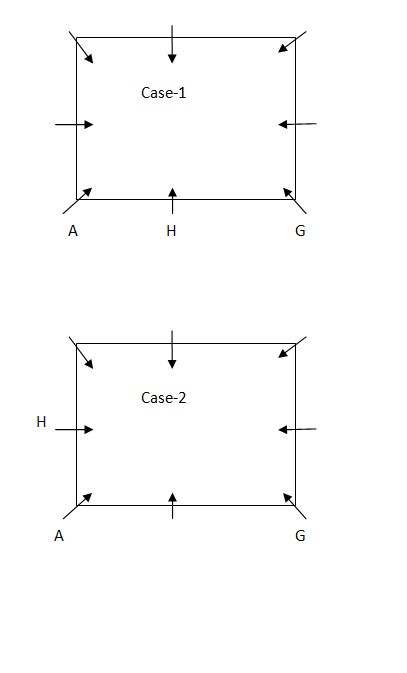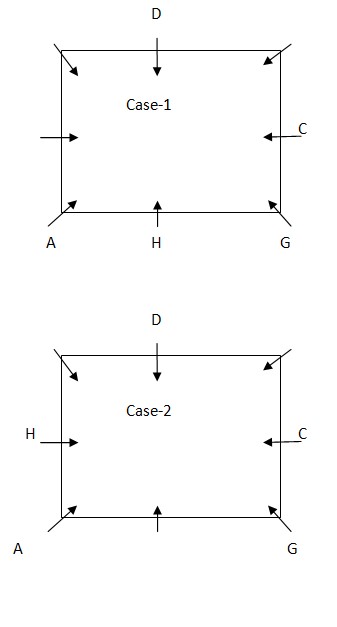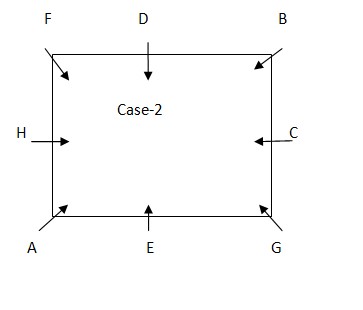Question
In which of the following combination both the persons
are facing towards each other? Study the following information carefully and answer the below questions Eight persons – A, B, C, D, E, F, G and H are sitting in the square table such that all of them are facing towards the center. Four persons are sitting in the middle of the sides of the table and four persons are sitting at the corner of the table. All the information is not necessarily in the same order. A sits second to the left of G, who sits at one of the corner of the table. H sits either to the immediate right or to the immediate left of A. D sits opposite to the one who sits second to the left of C. C sits in the middle of the sides of table. D is neither the immediate neighbor of G nor A. E is the immediate neighbor of either of A or F, but not the both. B sits second to the left of F.Solution
A sits second to the left of G, who sits at one of the corner of the table. H sits either to the immediate right or to the immediate left of A. From the above condition, there are two possibilities.  D sits opposite to the one who sits second to the left of C. C sits in the middle of the sides of table. D is neither the immediate neighbor of G nor A
D sits opposite to the one who sits second to the left of C. C sits in the middle of the sides of table. D is neither the immediate neighbor of G nor A  E is the immediate neighbor of either of A or F, but not the both. B sits second to the left of F. From the above condition, case1 gets eliminated. Case 2 shows the final arrangement.
E is the immediate neighbor of either of A or F, but not the both. B sits second to the left of F. From the above condition, case1 gets eliminated. Case 2 shows the final arrangement. 
Statement:
Few buses are truck.
At-most some bus are Tractor.
Only a few Tractors are train.
Conclusion:
1. Some Tr...
Read the given statements and conclusions carefully. You have to take the three given statements to be true even if they seem to be at variance from co...
Statements:
All gold are silvers.
All silvers are diamonds.
Some diamonds are ruby
No ruby is silver.
Conclusion...
Statements:
All Animals are Jungles.
Only few Jungles are Trees.
Only few Trees are Forest.
No Forest is a Farm.
Conc...
Statements:
Only a few Orange is Basket.
All Hampers are Baskets.
No Hamper is a Gift.
Conclusions:
I. Some Hampers c...
- Read the given statements and conclusions carefully. Assuming that the information given in the statements is true, even if it appears to be at variance wi...
Conclusions:
Some glaciers are not hemispheres.
Mostly equators being oceans is a possibility
Statements:
Statements:
No Pencil is a Sharpener.
Only a few Sharpeners are Erasers.
98% of Erasers are Pens.
100% Pens are Boxes.
<...Conclusions:
I. Some Mermaids are not Sharks.
II. Every Sharks can be Dolphins.
Statements:
Statements : All dens are cattle.
Some cattle are cows.
No cow is a horse.
Conclusions:I. All dens are not horses.
II. So...



